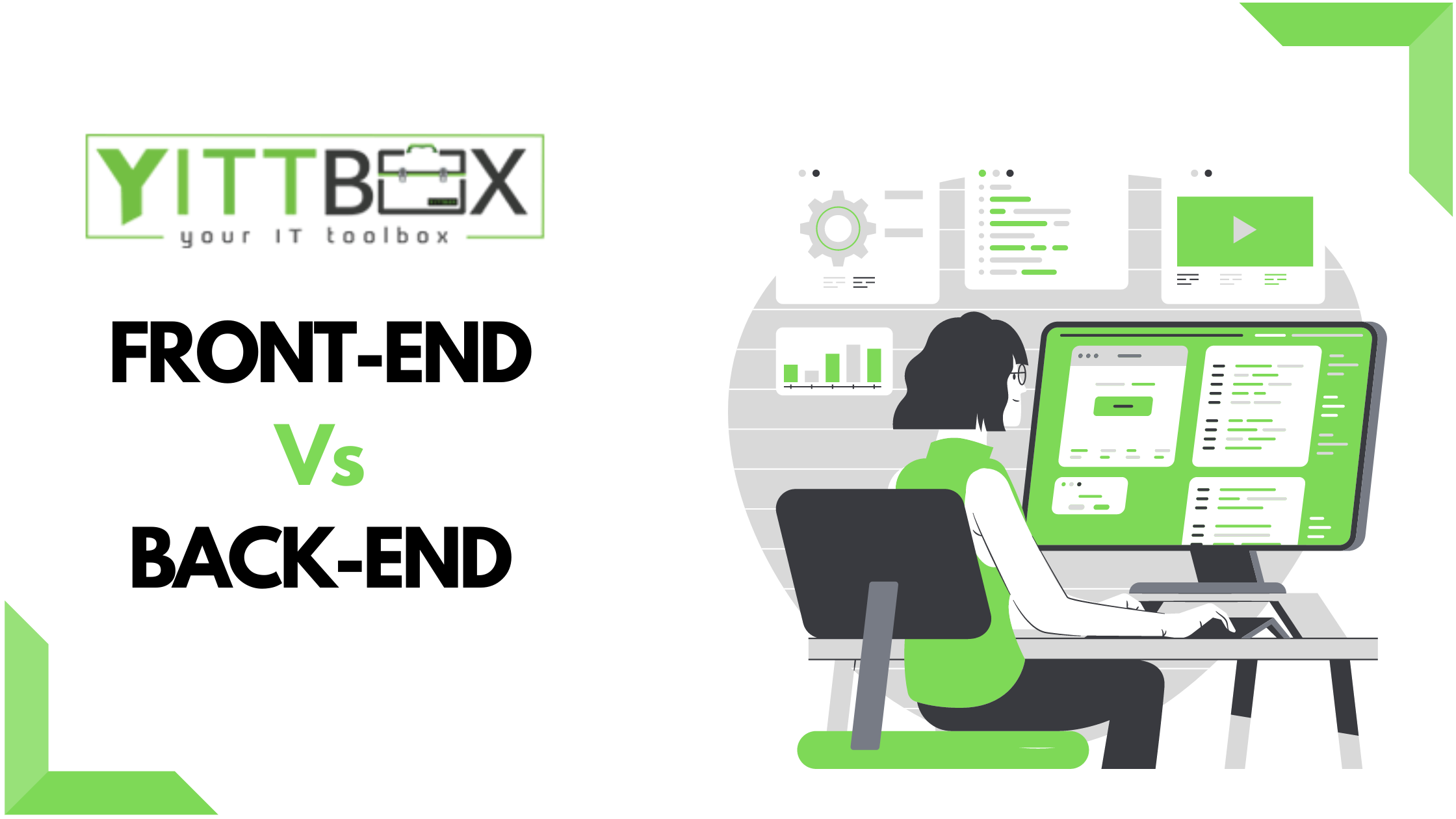Front End vs Back End Development
This blog tells you about the complete detail of Frond End vs Back End Development of Website. It includes the importance as well as the meaning and scope of these two terms. The factors of Front End and Back End is also discussed in the Blog.
This blog tells you about the complete detail of Frond End vs Back End Development of Website. In today’s digital era, a website plays an important role for businesses of any size to help them in establishing credibility and build trust with their customers.
It also helps them reach their audiences worldwide. A good quality website with engaging features as well as content forms the backbone of any business.
When we talk about developing a website, the two the most important terms that form the basis of it are Front end development and Back-end development.
What are the Front end and Back end of a website?
The front end refers to the external appearance of any website and It is also better known as the client-side of the application. It is the face of a website and mainly consists of text, color, images, colors, and menu. The languages majorly used in front-end development are HTML, CSS, and JavaScript.
The back end on the other hand consists of the way any website functions. It is the server-side of the website. It is the mechanism, tools, and technologies used to make a website up and running. It is that part of a website that cannot be seen and we cannot interact with it as users. It is the sole responsibility of the back end to make sure that everything at the front end/client side runs smoothly.
What are the factors that form the major portion in front-end development?
There are mainly two key aspects to be taken care of by any front end developer:
1.) Responsiveness of a website.
2.) Website speed and performance.
By making a website responsive, we mean to say that it is the first and foremost duty of the front-end developer to make sure that the website appears correctly on all screen sizes.
Some of the Common Languages used in the Front end development:
HTML: HTML stands for Hypertext Markup Language. It forms the core part of the website and helps decide the overall design and functionality. It helps define the structure of the web pages and ensures that the browser displays images, text, etc. the way they are supposed to look.
CSS: In order to make a website look attractive and eye-catchy, CSS plays a very important role. It helps in creating web pages that look attractive and interactive as well. It is used for giving a proper format to web page layouts and it also helps in creating printer-friendly web pages.
JavaScript: In order to make a website interactive, JavaScript which is an object-oriented computer programming language comes into play. It helps enhance the website's functionality. Dynamic user interface components such as checkboxes and search fields can be created with the help of this famous scripting language.
Key takeaway
Each language in Front end development has a specific function. Those were the most common languages used in front-end development. In order to create a smooth and seamless experience, front-end developers make use of UI/UX principles and focus on typography, color theory, layout, and grid systems. If you aspire to become a front-end developer then you must know the above three languages along with JavaScript frameworks.
Some of the Common Languages used in Back end development:
To be functional, the front end requires the support of the back end. Otherwise, it would just be lines of inactive code. Front-end languages communicate with the Back end languages and pass the requests. Some of the popular Back end languages are Ruby, Python, and PHP.
Ruby: Ruby is an object-oriented programming language. Its syntax is easy to read and understand. It is mostly used in developing web applications. Ruby on Rails is a popular framework used to help develop websites and applications by streamlining the development process.
Python: Python is again an object-oriented programming language. Being a general-purpose programming language, it can be used for web development, AI, machine learning, mobile application, etc. It is used to code the logic at the server-side.
PHP: PHP stands for Hypertext Pre-processor. PHP scripts can only be interpreted on a server that has PHP installed. Being an open-source and free scripting language, PHP is also used for creating dynamic websites. As compared to other scripting languages, it is easy to use and simple to understand.
Key takeaway: Back-end languages and Front end languages coordinate with each other to fulfill a user’s request/action.
Frameworks used for Front end Development
UX(User Experience) forms an important aspect of any web application and if you want to focus on it, then you need to take the help of a front-end framework. In order to give a boost to website look and feel, framework plays a major role.
AngularJS, React.js, Flutter, JQuery are some of the Front end Frameworks.
Frameworks used for Back end Development
Back-end frameworks help enhance web development by providing ready-made components and thus help in building the backend website structure. Express, Django, Rails, Laravel, spring are some of the frameworks used in back-end development.
Conclusion
To make a good and fully functional website, the front end goes hand in hand with the back end.
The front end is the face of a website or any web-based application and the back end is the mind that processes the requests submitted by the front end.
Front-end languages used most commonly are HTML, CSS, and JavaScript. Some of the commonly used back-end languages include Ruby, Python, and PHP.







